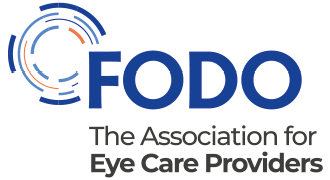Updates
Background
This section provides resources on performing eye examinations in the UK.It is designed for all members including, current and future practice owners.
The eye examination
We, like the College of Optometrists, use the term eye examination to refer to a sight test [1]. Performing a sight test is a regulated function and who can perform a sight test, what it must contain and what should follow it is set out in the Opticians Act 1989 [2] and subsequent Regulations [3].
During the eye examination, optometrists or a registered medical practitioner undertake a wide range of procedures to assess and correct vision, analyse and aid ocular muscle balance, and detect eye and general health issues, and more. In the UK, optometrists provide the vast majority of these eye examinations.
The College of Optometrists provides detailed guidance on performing routine eye examinations as well as advice on examining younger children, drivers, VDU users and people with disabilities and other groups. This guidance is open source as part of the College's knowledge, skills and performance guidance.
Equipment list
Eye care services are changing rapidly in the UK, with providers in primary and community settings now widely offering retinal photography as well as optical coherence tomography (OCT) and other advanced diagnostic tests.
If you are based in England, Northern Ireland or Wales, you will need to make decisions locally on which equipment to invest in, based on a range of factors such as the NHS sight test fee and your local demographics and other funded NHS eye care services. The College of Optometrists has produced a helpful equipment list for performing routine eye examinations.
In Scotland, as a GOS provider, you will need to meet local requirements [4]. You can access updates, with Appendix E in the annual PCA specifying current requirements.
Other support and advice
You might also find the following resources helpful:
Safe practice: eye testing guidance. This highlights potential risks that might arise in practice and how you can mitigate these for the benefit of patients. It also helps you comply with General Optical Council standards
Sight test/eye examination intervals. This includes the Memorandum of Understanding on sight test intervals.
Sight tests at home in collaboration with the College of Optometrists and Thomas Pocklington Trust. A guide to sight tests at home
This guidance provides an overview of key legislation, including regulations, rules and other notices which are particularly important in primary and community eye care settings. Legislation coming soonUpdates
Originally published: January 2020
Reviewed: NA
Next review date: March 2022
Info: NA
References and notes
The next review was originally planned for December 2021. This was changed due to prioritising work during the pandemic.
[1] The sight test and duties to be performed during a sight test are defined in law. Opticians Act 1989, Section 26
[2] Sight Testing (Examination and Prescription)(No.2) Regulations 1989 https://www.legislation.gov.uk/uksi/1989/1230/regulation/5/made
[3] In the UK, only optometrists and registered medical practitioners and students on authorised training programmes are permitted to test sight. Opticians Act 1989, Part IV, section 24
[4] Under paragraph 6 of Schedule 1 to The National Health Service (General Ophthalmic Services) (Scotland) Regulations 2006, you are required to provide proper, sufficient and appropriate equipment for the provision of GOS "as may be requisite" - i.e. necessary. Note: as part of Scottish GOS reforms in 2006, practices were given an £8,000 allowance for equipment, with essential and other equipment requirements reiterated in Annex B (p-4-5) of 2007 PCA(O)3. PCA(O)(2018)02, E, pages 24-25, sets out a mandatory - minimum - equipment list.

 Patients and public
Patients and public
 Policymakers
Policymakers Members
Members News and views
News and views
